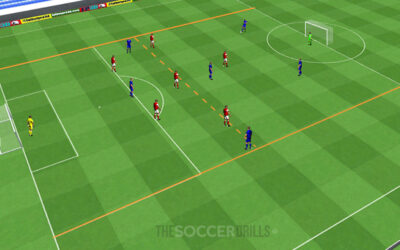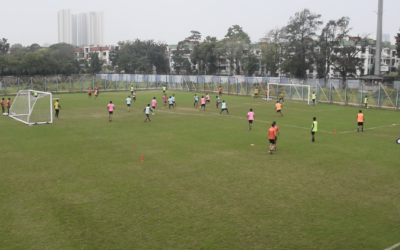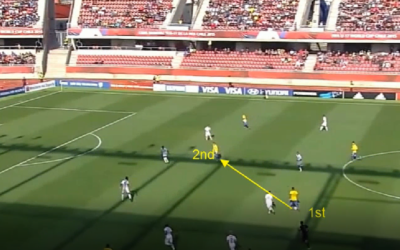Since the irruption of the famous Tiki-Taka implemented by the Barça of Guardiola or by he Spanish national team, this style became a real trend and many teams started to base their practice routine on one/ two touches and several passes.
The abuse of those drills – whether rondos, technical figures, possessions and reduced spaces to name a few – that use “one or two touches maximum!” as a main rule, have also caused teams to stop training many tactical principles, both offensive and defensive.
As in life, also in soccer it’s all about balance!
If we watch a game, especially in youth soccer, we notice there are many situations when coaches say to their players: “Why didn´t you move with the ball if you had space?”, “run with the ball!”, “face your opponent, seek the one-on-one situations”. In many of these cases, if we analyze their weekly practice, almost all of the drills have been governed by the same rule: “one or two touches max!”.
If during practice, players have no other option than playing one or two touches, it becomes very difficult for them to do otherwise during a real match!
When we abuse of the “the one or two touches rule”, we eliminate many options and limit players on their ability to make smart decisions, and, therefore, on their ability to read situations during the game. Eventually, we would limit players growth!
Some of the concepts we stop to train in modern soccer are totally necessary for a correct development of young players. Below, we describe only a few of them:
- Change of pace: if players cannot run with the ball, they will not be able to develop the ability to identify a free space and, through a change of pace, move forward or even beat a rival line!. We must be careful, because, if we don’t train these situations, we would also cause that our team won’t be prepared to defend the opponents changes of pace.
- Offensive delay: with only two touches it is very difficult to perform an offensive delay! Furthermore, if a player does not practice the offensive delay, he won’t give enough time to his teammates to lose their marks or to make those movements that create spaces and that third players shall occupy (tactical principle of Free Spaces).
- Finally, if we consider the technical aspects, we would be limiting both running with the ball and dribbling during practice. If a player can only play two touches then he/she probably won’t be able to run with the ball nor dribble; but the real problem – from a player’s development perspective – won’t only be the technical side of it; by not training these situation players simply won’t have the possibility to choose if it is a good time for running with the ball or for dribbling, eventually, impacting their ability to make intelligent decisions.
Here below, we have selected a few videos showing real situations of plays: we will see that teams balancing these elements really will make a big different in young players and teams, especially pushing players in making smart decisions when it really counts.



0 Comments